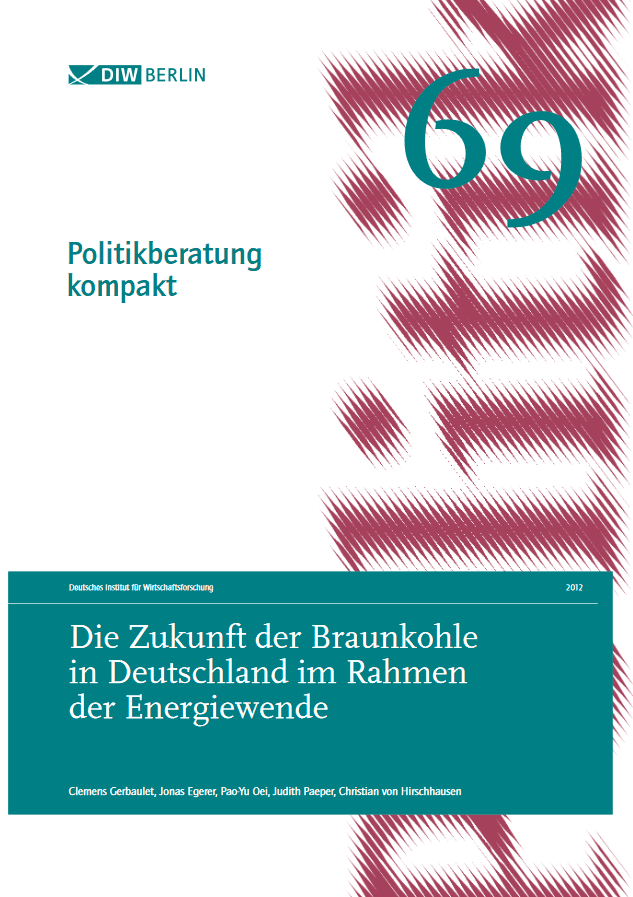Die Zukunft der Braunkohle in Deutschland im Rahmen der Energiewende

This study analyzes the perspectives of lignite mining and electrification in Germany, in the framework of the energy transformation. With the phasing out of nuclear energy, ambitious CO2-targets, and an increasing share of renewables, the role of fossil-fuel generation has changed: from having a secure position in the energy mix (i.e. peak load, mid load, or base load), their main task in the future will be to support the balancing of intermittent renewables (mainly wind and solar). While there is broad consensus that natural gas fuelled plants are flexible backup capacities, and that new investment is unlikely to take place in hard coal power plants, the future of the lignite system is even more uncertain.
Against this background the study analyzes whether new investments in lignite power plants make sense in economic, energy systems, and environmental terms. The study is based on evidence from economic models, amongst them a business investment model, a European-wide energy model, a dispatch model, and an infrastructure model for CO2-pipelines.The model results and additional considerations on the economic and technical framework suggest that the construction of new lignite power plants is not plausible from any of the three perspectives:
- In economic terms, the investment into a new lignite power plant is financially not viable, since it would most likely yield a negative net present value in the order of several hundreds of million €. The main reasons are high capital costs, decreasing full load hours, and a high sensitivity to the future CO2-price. An investment analysis at the European level also shows that new capacities in Germany would be natural gas plants, with not a single lignite plant built;
- from an energy systems perspective, the lignite basins in the Rhine area, Central Germany, and Lusatia are located in regions of energy surplus, thus new power plants would not contribute to the energy shortage which is primarily located in Southern Germany. A further expansion of exports from Central and Eastern Germany would be counterproductive, given the tight network constraints towards Southern Germany; the West of Germany will be supplied with competitive wind energy from the North. Thus lignite plants would not benefit from regionally differentiated capacity payments, either, which further worsens their economic feasibility;
- in environmental terms lignite will remain the most CO2-intensive technology of all fossil fuels, with almost 1 t/MWh (comparison: natural gas ~ 350 kg/MWh). The decision by the German energy industry and policy to abandon large-scale carbon capture, transport, and storage (CCTS) implies that the CO2-objectives can only be met through a rapid phasing-out of lignite plants. Even in the highly unlikely case where CCTS would come about in Germany and North-West Europe, the CO2-abatement would primarily benefit the steel and other industries, the costs for CCTS in lignite being exorbitantly high.
Based on this assessment a gradual phasing out of lignite from the German electricity system seems likely with the last units closing down around 2040/45. Fortunately, all three lignite basins have sufficient reserves that have already been secured to supply the necessary reserves to the power plants. The development of new mining areas in either of the regions is therefore not necessary.
The foreseeable decline of the lignite economy suggests an urgent need for regional diversification strategies, based on the energy competences accumulated in the three basins. Given that the steps and the time frame of phasing out of lignite are foreseeable, the conversion should not lead to structural breaks towards a sustainable energy future, neither social hardship, no labor shedding being expected as almost three decades is a long time for this process. Economic and structural policy measures need to accompany this process as soon as possible.